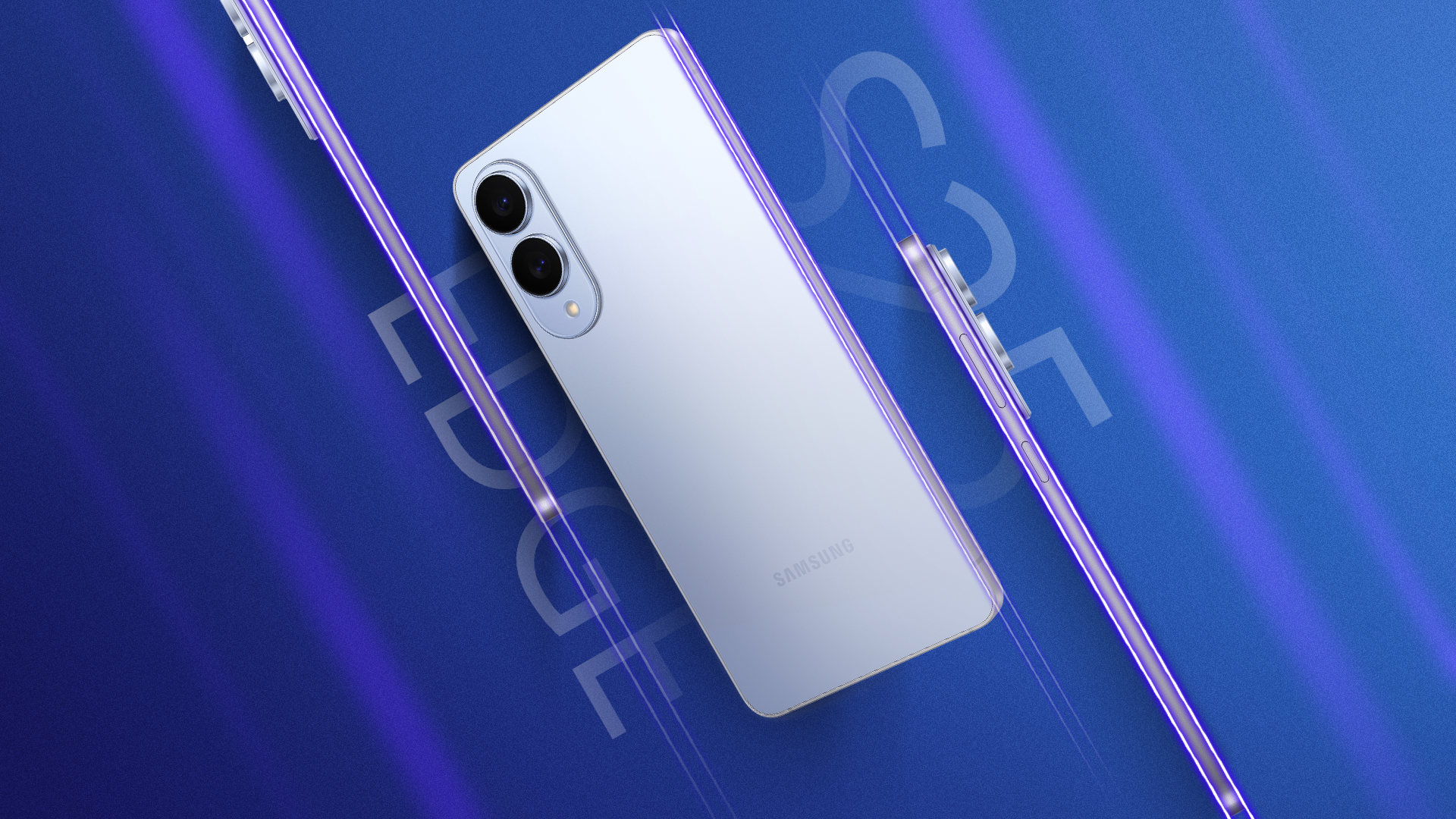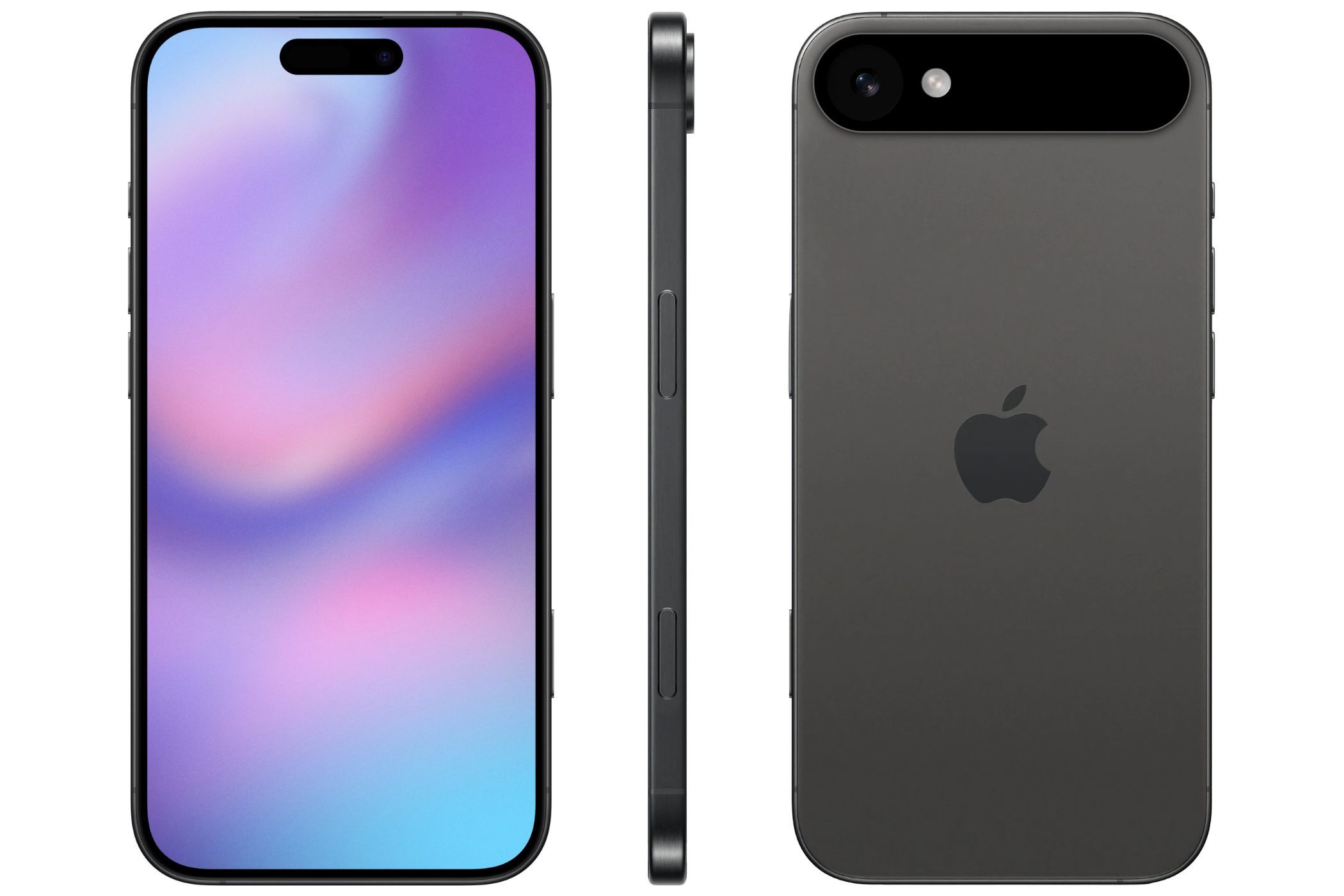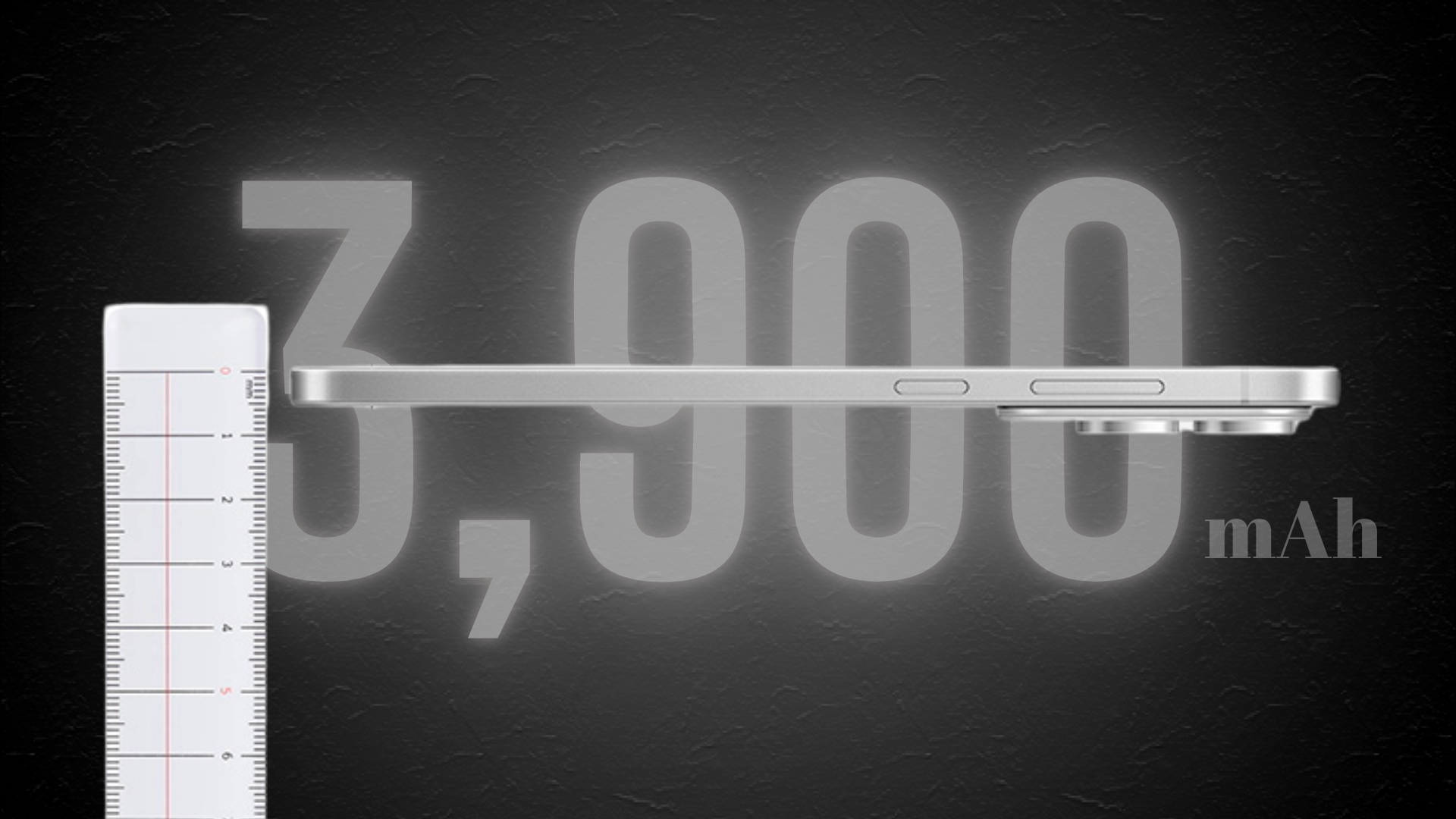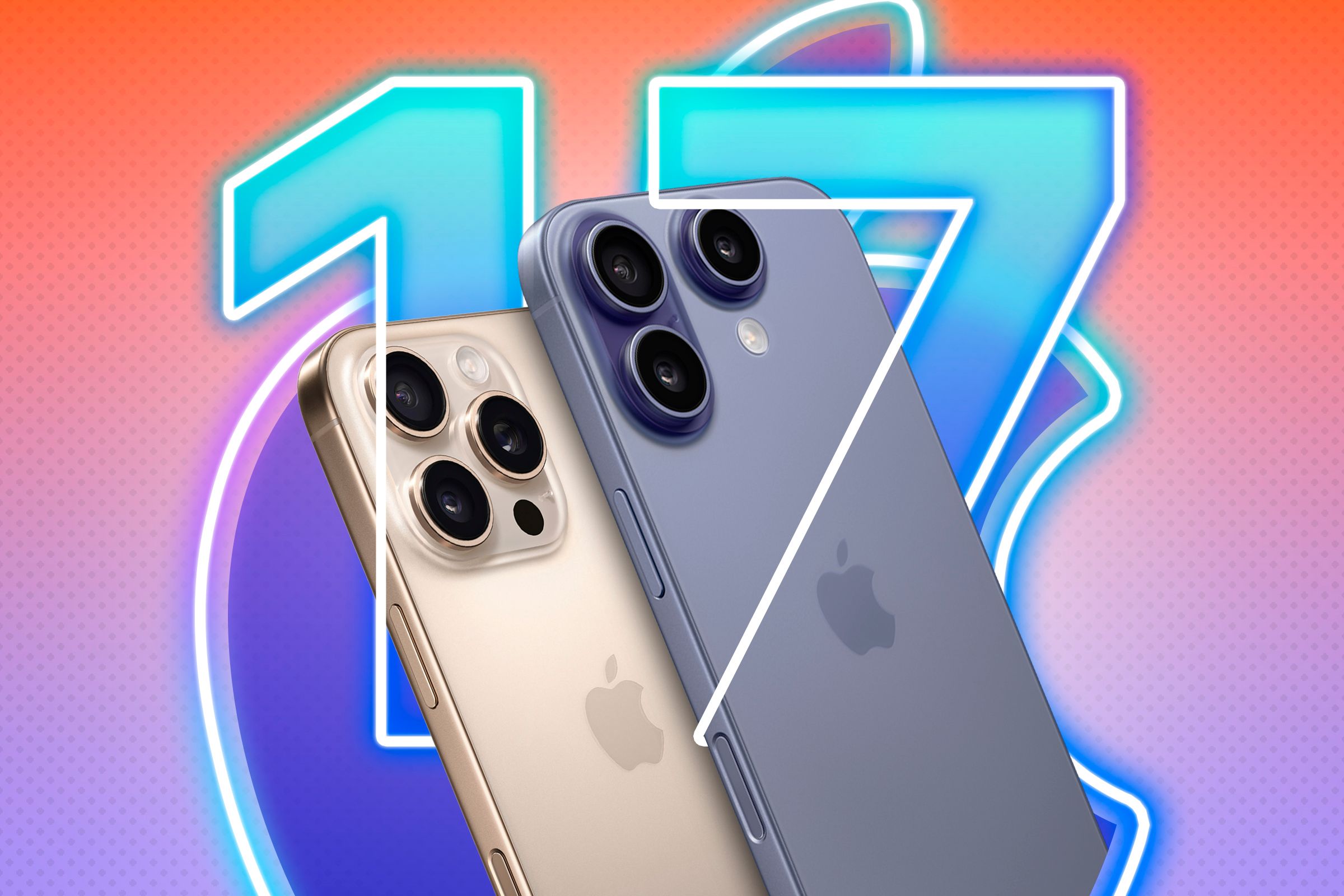Summary
- Samsung has the first-mover advantage in the ultra-thin flagship space, a segment that is yet to prove its mettle, but there are two main issues with the company’s Galaxy S25 Edge.
- The phone reportedly offers sub-optimal battery life, which Apple’s rumored iPhone 17 Air could fix with its power-efficient processor and modem, along with better hardware-software optimization.
- The iPhone 17 Air could also debut at a more appealing price than the Galaxy S25 Edge, resulting in a clear-cut differentiation from the iPhone 17 Pro models.
With the Galaxy S25 Edge, Samsung has pushed the boundaries of the conventional form factor associated with a regular smartphone: the phone features a 5.8mm ultra-thin chassis carved into a titanium frame. However, choosing a thin form with premium materials results in two major problems: battery life and price.
This is something the rumored iPhone 17 Air could fix, as long as Apple’s willing to play ball. Here’s how.
Galaxy S25 Edge’s Form vs. Function Trade-off
It is remarkable how Samsung has made and released a super-thin smartphone that retains a flagship status. Despite featuring a 5.8mm titanium chassis thinner than all the other Galaxy S25 models (and other Samsung smartphones), the S25 Edge offers top-tier hardware and software. According to rumors, Apple could release the iPhone 17 Air based on the exact formula later this year.
For instance, the handset has a 6.7-inch 120Hz AMOLED screen, which is as sharp and bright as the Galaxy S25+. Like the rest of the lineup, the S25 Edge features the Snapdragon 8 Elite (3nm) chip for exceptional CPU and GPU performance. For photography enthusiasts, the phone borrows the 200MP Samsung HP2 from the S25 Ultra (albeit with a thinner lens structure).
Last but not least, you get all the latest Galaxy AI features, along with Samsung’s industry-leading promise of seven years of Android and security updates. Regardless of a few misses, this is the core recipe for an Android flagship in 2025, and the fact that Samsung has engineered all the hardware components in a phone that’s 29% thinner than the S25 Ultra is commendable.
However, in the pursuit of making the thinnest modern smartphone (saying modern as Motorola released the 5.2mm Moto Z in 2016), Samsung seems to have missed one of the most crucial aspects of a flagship experience: anxiety-free battery life. Early reviews suggest that the Galaxy S25 Edge offers a sub-optimal battery life at best (especially for moderate to heavy users or gamers).
In addition, flagship phones are supposed to provide the best possible specifications at their price, but the S25 Edge fails miserably. Even though its specifications sheet runs shorter than the Galaxy S25+ or the Galaxy S25 Ultra, the phone currently costs more than the discounted Galaxy S25 Ultra. The pricing is yet another conundrum for potential buyers.
Apple to Jump On the Super-Thin Bandwagon Soon
While Samsung’s S25 Edge is already official, the iPhone 17 Air should arrive this September, along with the other iPhone 17 models, including the baseline iPhone 17, the iPhone 17 Pro, and the iPhone 17 Pro Max. Yes, the purported Air is said to replace the Plus variant that has been around for three generations.
Per renowned Apple analyst Ming-Chi Kuo and supply chain leaker @yeux1122 (as reported by 9to5Mac), Apple’s super-thin iPhone, the iPhone 17 Air, might feature an even slimmer chassis that measures 5.5mm at its thinnest (vs. 5.8mm on the S25 Edge). It is said to weigh just 145 grams (18 grams less than the S25 Edge).
The iPhone 17 Air could feature a 6.6-inch OLED ProMotion panel, a rectangular camera bar (like the Pixel flagships, but toward the upper edge of the back panel), the rumored A19 chip, and MagSafe charging. Out of these, it is the A19 chipset that could give Apple’s thin flagship an upper hand in terms of raw performance and thermal efficiency.
Among its cons could include one 48MP back camera (no ultrawide or telephoto lens), a single-speaker setup (vs. hybrid stereo speakers on the S25 Edge), and a lack of mmWave 5G (courtesy of the in-house C1 modem first released with the iPhone 16e). Even so, the iPhone 17 Air could fix two big problems with the S25 Edge, but only if Apple wants to do so.
How Apple Could Fix the S25 Edge’s Battery Problem
In the past, we’ve seen how iPhones with a smaller battery capacity last as long as Android phones with a significantly larger battery capacity.
For instance, the iPhone 16 Pro Max, with a 4,685 mAh battery, lasts around 8 hours and 30 minutes on Phone Arena‘s battery test, 30 minutes more than the Galaxy S25 Ultra with a 5,000 mAh battery. Similarly, the iPhone 16 Plus with a 4,674 mAh battery lasts seven hours and 31 minutes, five minutes less than the S25+ with a 4,900 mAh battery.
Establishing a mathematical connection between both examples, an iPhone lasts about the same as an Android flagship with a five to six percent smaller battery. However, this is just for understanding, as there are a multitude of factors that determine a phone’s battery life.
If Apple manages to equip its ultra-thin handset with a similar battery (around 3,900 mAh) or equips it with a smaller but higher-density battery (like what we’ve seen several Chinese manufacturers do), it could solve the fundamental problem with Samsung’s thinnest smartphone.
On the other hand, a recent report via The Information suggests otherwise. The iPhone 17 Air may be thinner than the S25 Edge, but it is said to feature an even smaller battery (2,800 mAh), resulting in only 60-70% of users getting a full day of usage between charges. I assume these are light users or those using the iPhone as their secondary device.
In retrospect, it was the iPhone 12 that offered a 2,815 mAh battery, lasting around five hours on Phone Arena’s battery test. However, if we factor in the higher chip efficiency and the software optimization, it could help the slim iPhone extract more screen-on time from the cell. We’ve seen this as a trend on iPhones for generations, which is precisely what I’m counting on for the iPhone 17 Air.
On the optimistic side, Bloomberg‘s Mark Gurman stated, “The model [iPhone 17 Air] will have a battery life that’s on par with current iPhones.” Moreover, factors like the power-efficient A19 chip and C1 modem, a higher-density battery with silicon anodes, an AI-powered battery preservation feature in iOS 19, and a ProMotion screen could boost the iPhone 17 Air’s battery life to standard iPhone levels.
Could the Air Be More Affordable Than the S25 Edge?
Back in March, Gurman reported how the ultra-thin iPhone could cost $899, similar to what the iPhone 16 Plus costs for the baseline variant with 128GB of storage. That could have placed the Air between the vanilla iPhone 17 (with a smaller screen) and the iPhone 17 Pro (with a triple camera setup and a faster chip).
If that were to happen, the 256GB variant would cost around $999, $100 cheaper than what the Galaxy S25 Edge currently retails for in the United States. However, as of now, the prices for the upcoming iPhones remain uncertain, as the looming threat of tariffs on iPhones manufactured outside the United States makes this hard to predict.
|
iPhone 17 Air (Rumored) |
iPhone 16 |
iPhone 16 Plus |
iPhone 16 Pro |
iPhone 16 Pro Max |
|
|
Starting Price |
$899 – $999 |
$799 |
$899 |
$999 |
$1,199 |
On the one hand, it might increase the cost of iPhones imported from regions like China and India. On the other hand, making an iPhone in the United States could increase assembly costs to around 13 times ($390) when compared to India ($30) due to the prevalent minimum wage laws, according to the Global Trade Research Initiative (via Economic Times).
If the company decides to pass on the added cost to the consumers, we could see iPhones get way more expensive, which could hamper the company’s sales in real ways. From what it looks like, paying a 25% tariff might make more sense for the company than manufacturing iPhones in the United States.
Either way, there’s still a solid chance that the iPhone 17 Air could cost under $1,000, and if that happens, it could be an ultra-thin flagship that offers more value for buyers’ money. Further, you’d have a distinct difference between the iPhone 17 Air, a smartphone with an exceptionally thin form factor, and the iPhone 17 Pro Max, the company’s top-tier flagship with several additional features.
Moreover, the iPhone 17 Air’s rumored price looks a lot less confusing and makes a lot more sense for a handset that focuses on form rather than functionality. Keeping the price under $1,000 could strike the right balance between cost-conscious hardware choices and a unique design.
Thin Smartphones Could Be a Big Hit
If the iPhone 17 Air manages to beat the Galaxy S25 Edge in terms of battery life, it will set a new standard for thin flagships, a category yet to prove its mettle. This could, in turn, encourage Samsung to improve the effective battery life of its thin flagship and other manufacturers to step into the category (who can innovate and adapt faster).
However, if that isn’t economically feasible for manufacturers, they could shift their focus to smartphones with a 6mm side profile and substantially larger battery capacities. Before the S25 Edge came out, Samsung was already on the right track of equipping relatively thinner smartphones with a full-fledged flagship battery cell that provides excellent usage time.
The baseline Galaxy S25 is already five percent slimmer (7.2mm vs. 7.6mm) than the 2025’s Galaxy S24 despite having the same 4,000 mAh battery. The S25 Ultra, on the other hand, is already over seven percent slimmer than the S23 Ultra from 2023. Do you see where I’m going with this? We don’t need super-thin smartphones as much as we’d want to get rid of the battery anxiety that kicks in every evening when our phones are already in battery-saving mode.
Given that there hasn’t really been an innovation in brick-style smartphones, I hope that Apple uses the time it has to monitor how the audience responds to the Galaxy S25 Edge, identify its pain points, and address them with its rendition of an ultra-thin flagship.





